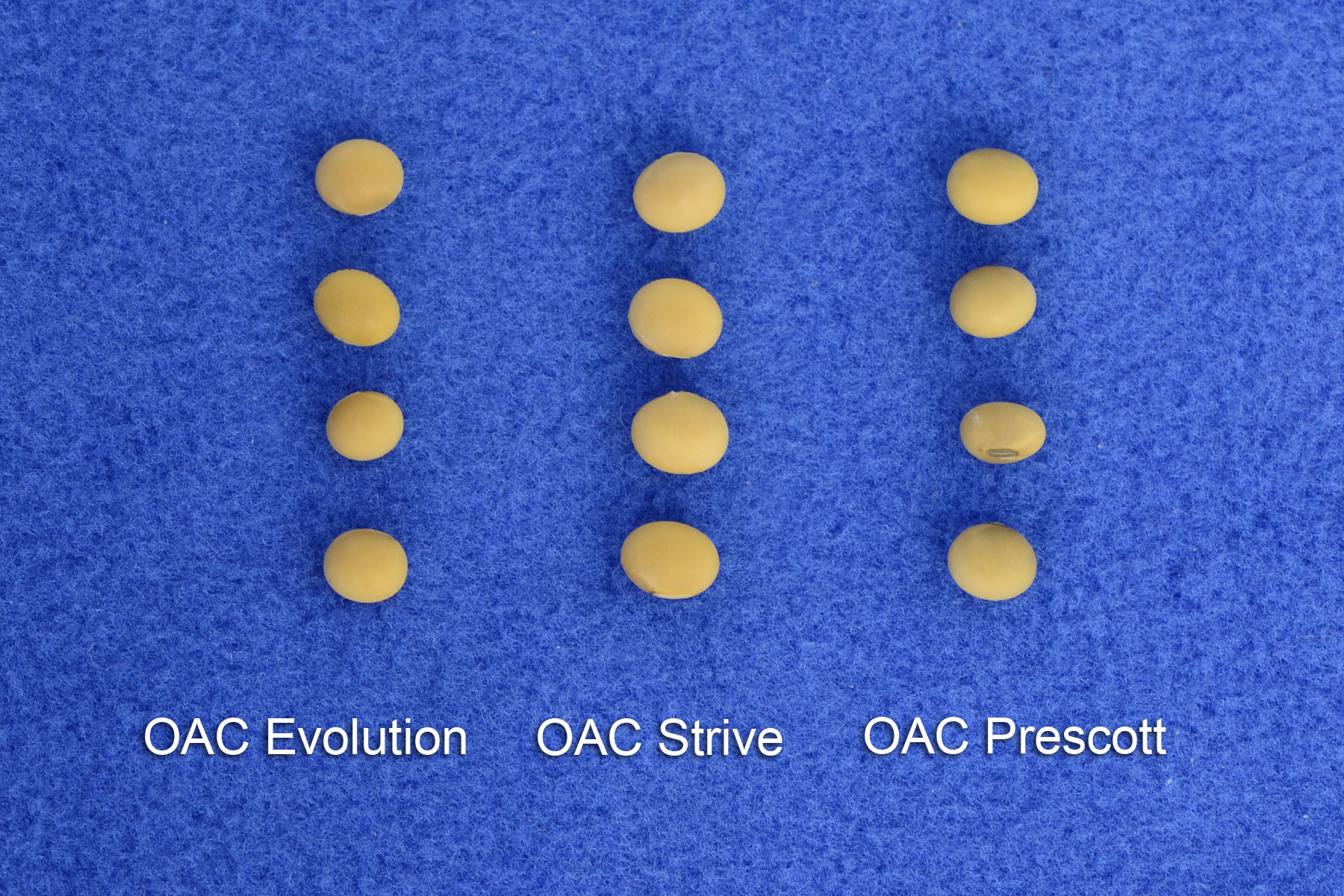OAC Evolution
| Denomination: | 'OAC Evolution' |
|---|---|
| Botanical Name: | Glycine max |
| Applicant/Holder: |
University of Guelph Research Innovation Office Building #92, 50 Stone Road East Guelph, Ontario N1G 2W1 Canada |
| Breeder: |
Istvan Rajcan, University of Guelph, Guelph, Ontario |
| Application Date: | 2017-02-10 |
| Provisional Protection:: | 2017-02-10 |
| Application Number: | 17-9095 |
| Grant of Rights Date: | 2021-11-01 |
| Certificate Number: | 6491 |
| Grant of Rights Termination Date: | 2041-11-01 |
Variety Description
Varieties used for comparison: 'OAC Prescott' and 'OAC Strive'
Summary: When 95% of the pods are ripe, the hairs on the middle third of the stem of 'OAC Evolution' are tawny whereas they are light tawny for 'OAC Prescott'. At maturity, the 100 seed weight for 'OAC Evolution' is less than the 100 seed weight for 'OAC Strive'. The seed of 'OAC Evolution' is spherical flattened to elongated whereas the seed of 'OAC Strive' is elongated flattened. The hilum colour for 'OAC Evolution' is yellow whereas it is grey for 'OAC Prescott'.
Description:
PLANT: oilseed type, indeterminate growth type, erect to semi-erect growth habit, tawny pubescence on middle third of main stem, begins flowering early, matures early to mid-season
HYPOCOTYL: weak to strong intensity of anthocyanin colouration
LEAF: weak to medium blistering, medium intensity of green
LATERAL LEAFLET: pointed ovate, medium size
TERMINAL LEAFLET: ovoid, medium size
FLOWER: violet
POD: medium intensity of brown
SEED: large, spherical flattened to elongated, yellow ground colour of testa, opaque to intermediate glossiness of yellow testa
HILUM: yellow
FUNICLE: same colour as testa
Origin & Breeding History: 'OAC Evolution' (experimental designation SeCan 13-15C) originated from the cross between 'OAC Prodigy' and 'OAC Wallace' made in 2008 at the University of Guelph, Guelph, Ontario. The crossed material was advanced using a single seed descent technique until the F4 generation when, in 2009, a single plant was selected for maturity and agronomic traits in 2009. Seed from this plant was harvested and maintained by pedigree selection until the F4:8 generation. 20 single plants, selected for morphological similarity, were used to produce F4:9 Pre-breeder seed Increase plots which were further rogued for uniformity and then bulk harvested for breeder seed in 2015. The variety was tested as 'SeCan 13-15C' in the 2013 (2600 Heat Units) Private Ontario Soybean Variety Trials, the 2014 (2600 Heat Units) Public Ontario Soybean Variety Trials, and the 2015 (2600 Heat Units) Conventional Quebec Soybean Variety Trials.
Tests & Trials: The comparative trials for 'OAC Evolution' were conducted during the 2018 and 2019 growing seasons at the Elora Research Station of the University of Guelph, Elora, Ontario. Plots consisted of 4 rows per variety with a row spacing of 43 centimetres and a row length of 1.5 metres. There were 3 replicates arranged in a RCB design. Measurements were taken from 20 plants or parts of 20 plants of each variety per year except for the seed weight that was based on 5 measurements per variety per year. Mean differences were significant at the 5% confidence probability level based on a paired Student`s t-test.
Comparison table for 'OAC Evolution' with reference varieties 'OAC Prescott' and 'OAC Strive'
Seed weight (grams per 100 seeds)
| 'OAC Evolution' | 'OAC Prescott' | 'OAC Strive' | |
|---|---|---|---|
| mean 2018 | 19.0 | 20.0 | 21.4 |
| std. deviation 2018 | 0.26 | 0.42 | 0.21 |
| mean 2019 | 18.1 | 17.4 | 20.7 |
| std. deviation 2019 | 0.10 | 0.57 | 0.31 |
Click on image for larger view

Soybean: 'OAC Evolution' (left) with reference varieties 'OAC Strive' (centre) and 'OAC Prescott' (right)
- Date modified: